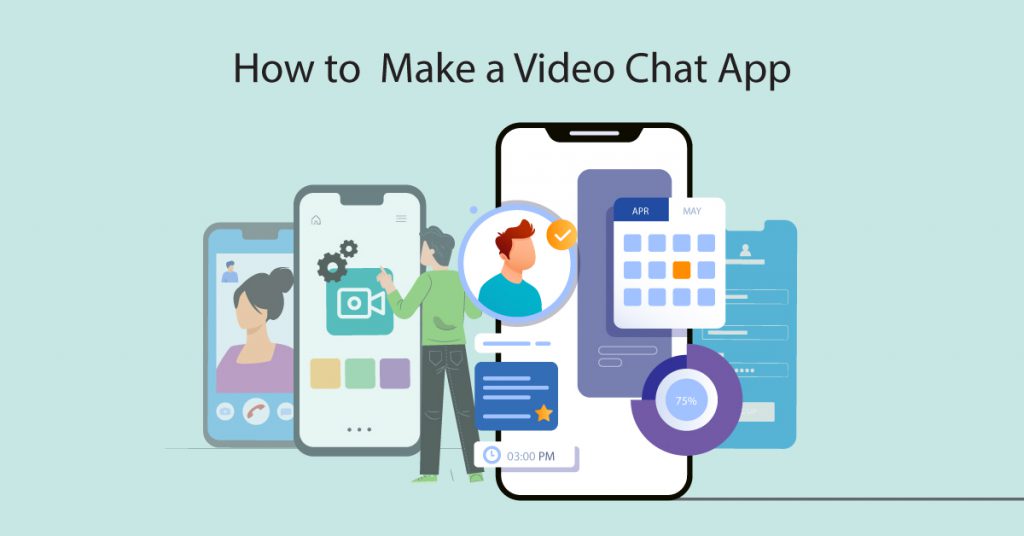
Video Call SDKs
While text messages and audio calls are still considered as the basic mode of communication, there is another type of call that has gained rapid popularity. It is video calling. In the present day, almost all instant messaging app comes with inbuilt video calling feature along with the basic messaging and audio calling facility.
What makes the instant messaging apps capable of offering video calls are the audio-video integration tools using real-time video call API and SDKs. The video call SDKs offer the technical infrastructure for setting up interactive real-time video communication. You can check more about the impact of voice and video call SDK on the communication process here: How Voice and Video Call SDK are Changing Communication Process
Video call API and SDKs are video integration tools. It is possible to customize these according to the business communication requirements. By implementing video calling SDKs, businesses can make real-time video calls from any device. As most video call SDKs are compatible with all major platforms therefore they perform smoothly over Android, iOS and Web Browsers.
How to integrate Video Calling into your App?
Developing an app with all its features from scratch is a time-consuming process that requires lots of resources and also time. Therefore if you already have an app and want to include a video calling feature in it the best option for you would be to select a video calling SDK and get started right away.
Video Call API and SDKs are the easiest way to add video calling features to any mobile app. These SDKs offer the flexibility to add the video calling feature along with a real-time communication platform to all your customers.
3 steps to integrate video calling in your app with video call SDKs:
Step 1: Account authentication
Businesses will receive the entire source code with video SDK credentials. Using these businesses can integrate the solution into their applications. After user account credentials have been verified and authenticated multiple times, businesses can access the entire video call SDK.
Step 2: Server Application
An advanced cloud-based server application helps to run the application at businesses’ premises. It also helps to synchronize the data, for example, contacts from any third-party apps. In this step, the server application grants access to the entire video and audio call services.
Step 3: Client Application
The main interaction takes place at the end-user side of the app. The Client application is the part where the user sends messages, images and makes video calls with multi-party users for a video call from any device like mobile phones or web browsers.
Benefits of Video Call SDKs
Video Call SDKs make it easy for businesses to add video calling functionality to their apps with very little effort. Also in the due process, they save time and money and completes the work smoothly in a very short duration.
Here are some of the benefits that businesses can receive with the video call SDKs
- Peer-to-peer video calls: With video call API and SDKs businesses can make peer-to-peer video calls, meaning calls are made directly between two without being routed over a central server. This ensures the quality of audio and video signals on-call as the connection does not have to travel further.
- High-quality voice: Enabling the video calling feature in your app with Video call SDK does not affect your video call quality. Your audio-video call quality remains the same throughout. Also in addition to this calls quality remains stable even in low bandwidth or poor network conditions.
- Call recording & Cloud storage: Wouldn’t it be better for your business to record an important call where presentations have been made and also crucial discussions took place? Yes, there are some video call SDKs that offer this option as well. You can record your video calls along with storing and retrieving them from the cloud. Cloud storage gives you many advantages over traditional storage and also can be accessed from anywhere at any time you need.
- Video conferencing: While most Video call API and SDKs offer the primary calling and a few other common features, some offer a bit more. Video conferencing is one of the important features which every business requires. It helps save time and money from multiple aspects. It also helps to include employees or clients from remote locations as well.
- Video calls on the browser: Video call SDKs also allow video calls from your browser. Therefore both 1-on-1 and group video calls are possible from browsers such as Chrome, Firefox, etc.
Video Call SDKs for your Business
While there are many options available, Reve Video call SDK with all its latest features has a lot to offer. Its features include all the latest requirements for businesses like video conferencing, peer-to-peer calls, call recording, browser-enabled video calls and more. Reve video call SDK also supports multiple platforms like iOS, Android and Web.
Reve Video Call SDKs secures all conversations with end-to-end encryption. This ensures that only the recipients can view the message. It also includes features like auto message deletion, AES Encryption along with Fingerprint security to offer complete security to business conversations.
To know more about Reve Video Call SDK, check here.




























